Materials commonly used in batteries can exchange large amounts of heat with the atmosphere when they undergo a pressure-induced phase transition. The effect might mean that organic ionic plastic crystals could find a second use enabling highly-efficient cooling without a refrigerant – dramatically reducing the carbon footprint of air-conditioning in a warming world.
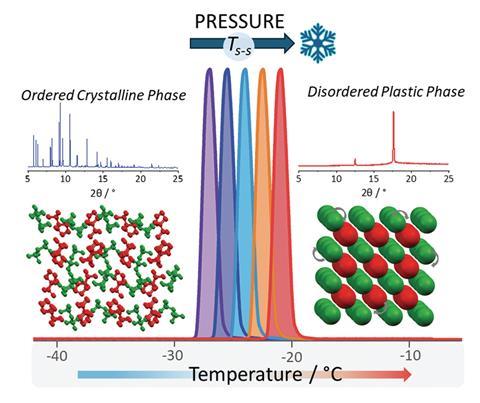
Current air-conditioning technology based on vapour compression contributes to climate change in two ways. The first comes from powering the device: air conditioning and electric fans already account for around 10% of global electricity consumption. The second is from the refrigerants – greenhouse gases sometimes thousands of times more potent than carbon dioxide. ‘We know that there’s significant leakage of those materials into the environment,’ says materials scientist Jenny Pringle at Deakin University in Victoria, Australia. Refrigerant-free alternatives to vapour compression could erase the second contribution, but if they were less energy efficient this could be a Pyrrhic victory.
Caloric materials give out or take in heat when an applied stimulus such as an electric or magnetic field causes them to transition between two solid phases with different entropy. This can then be used to transfer heat from cold to hot . Studies suggest this solid-state refrigeration could potentially be more energy efficient than vapour compression.
The barocaloric effect utilises pressure to trigger the phase transition. When a material transitions to a low-entropy, ordered state on compression, heat is released to the environment. If the pressure is released and it returns to a disordered state, the material once again takes in heat. The thermal energy exchange can be much larger than in other caloric effects, but the materials with the largest barocaloric effects discovered to date remain in the ordered state at ambient temperature and pressure, which makes them unsuitable for cooling. ‘There are some other materials that have transitions below room temperature and there are other materials that have large barocaloric effects, but there are not a lot of materials that display both,’ says Pringle.
Multipurpose materials
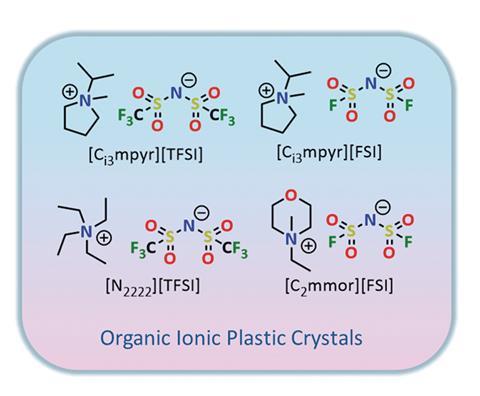
Pringle and her colleagues studied organic ionic plastic crystals, which were known to have a high-energy phase transition to a disordered ionic structure at low temperatures. This has been exploited to produce highly conductive electrolytes for sodium and lithium ion batteries. ‘It turns out the intrinsic material properties that make them good for that also make them good for barocalorics,’ says Pringle.
The researchers established that some existing crystals showed extremely promising properties, and they are now investigating why these examples are particularly promising and hope to design new, hopefully even better ones.
‘I think this is a really important step,’ says materials scientist Mengfan Guo at the University of Cambridge, UK. He notes two especially important points. First, the transition temperature is not just below room temperature but actually below freezing in some cases, which could allow calorics to be used in freezers. Secondly, he says that, although the materials do not present record caloric effects below room temperature, they open a door to further exploration of a wide family of materials that industry can already produce fairly cheaply for battery applications. ‘That’s pretty exciting,’ he says.
References
S L Piper et al, Science, 2025, DOI: 10.1126/science.adq8396



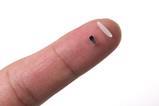



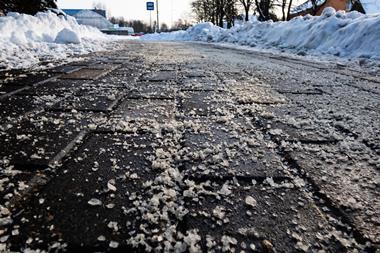
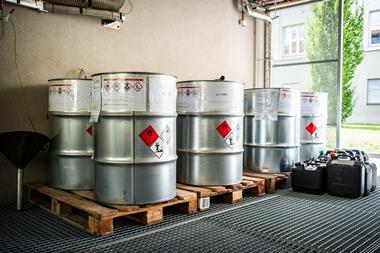

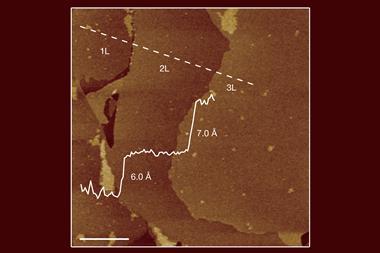



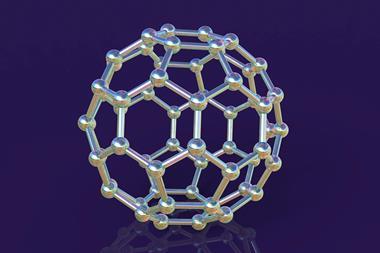
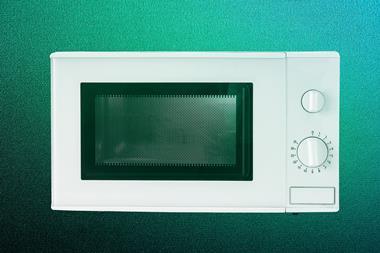

No comments yet